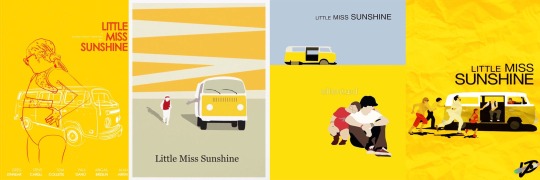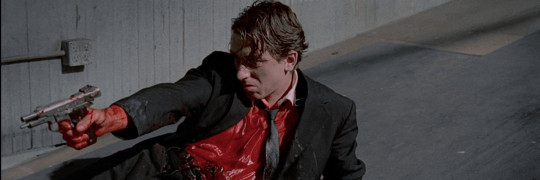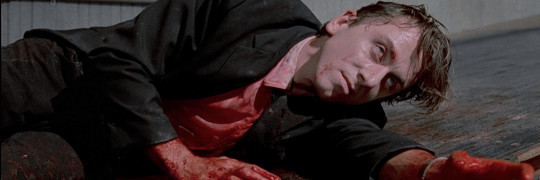#reservoir dogs headers
Explore tagged Tumblr posts
Text
















Reservoir Dogs headers
#header#headers#mr orange#mr pink#mr white#mr blue#mr brown#mr yellow#nice guy eddie#reservoir dogs#reservoir dogs headers#tim roth#harvey keitel#steve buscemi#quentin tarantino#michael madsen#chris penn#edward bunker#movie headers#movie header#black header
173 notes
·
View notes
Text




LAYOUT
Tim Roth as Freddy a.k.a. Mr. Orange in Reservoir Dogs (1992) (+edited).
Please reblog + like if you use them.
Please credit this account with the username (artneverjudges) wherever you use this edit.
11 notes
·
View notes
Text
changed my header (made it myself in case that wasnt. blatantly clear)
0 notes
Text
[ mr. orange / mr. white icons and headers ]








Like or/and reblog if you use them !
#reservoir dogs#reservoir dogs icons#reservoir dogs headers#mr. orange#mr. orange icons#tim roth#tim roth icons#mr. white#larry dimmick
161 notes
·
View notes
Text









film headers.
please 𝗹𝗶𝗸𝗲/𝗿𝗲𝗯𝗹𝗼𝗴 if u save.
#movies headers#movies#film#film headers#reservoir dogs#reservoir dogs headers#shutter island#shutter island headers#slc punk#slc punk headers#pulp fiction#pulp fiction headers#interestellar#interestellar headers#mad max#mad max fury road#mad max headers#scarface#scarface headers#girl interrupted#girl interrupted headers
167 notes
·
View notes
Text










#header#pulp fiction#reservoir dogs#donnie darko#the truman show#le fabuleux destin d'amélie poulain#amelie poulain#little miss sunshine#a nightmare on elm street#metropolis#frankenstein#nosferatu#movie#90’s
281 notes
·
View notes
Photo








Tarantino
#movie headers#movie header#twitter headers#twitter header#twitter#header#headers#tarantino#quentin tarantino#pulp fiction#death proof#reservoir dogs#jackie brown#django unchained#django#inglorious basterds#the hateful 8#kill bill#hollywood
42 notes
·
View notes
Text
After another dose of snow fell in the mountains, we were keen to drive up to the Lasithi Plateau to enjoy the scenic views. However, the first couple of days after the snow were dull and grey, so we waited. Then, when the sun shone, we had prior arrangements.
Friends from a nearby village took the drive to Lassithi and posted lovely photos on Facebook. Their lovely dog enjoyed his playing so much he must have thought the snow was especially for him. My thanks go to Mark lloyd-Jones for his kind permission to use the above photo and the one in the header.
If you visit the Skapanis Taverna with its wonderful views out across the plateau, ask to see their photo albums full of dramatic snowscapes. I took the lovely blue sky photo below, the last time I visited this taverna in September 2019. My almost black and white photos are from March 2011, so there is still time for more snow.
The lush green of the plateau, freshly saturated by snowmelt, looked fabulous rimmed by the circle of snow-topped mountains and reservoir was full.
This slideshow requires JavaScript.
With no snow for us to play in, we took a drive around the perimeter road to enjoy views from different vantage points. Without seasonal visitors, most kafenions/tavernas were closed. As we passed a kafenion called Castello, on a V junction just before the village of Agios Georgios, we saw a group of local men enjoying coffee outside in the sunshine. Minutes later we were soon on the table next to them.
We soon deduced that the main topic of conversation was the cost of using phones. Instead of phone bills being sent to each home, a huge stack of envelopes languished at the kafenion. Each man sifted through the pile, took out their bill, opened it, made exclamations and passed it around for comment. Then, without exception, they shrugged, drained their coffee and started chatting on their phones.
As you’ll see in the photo below, it was a lovely spot to enjoy our refreshments. Those trees must create lovely shade in the summer—we’ll return later in the year for a cool drink on a hot day.

As we had driven up to Lassithi via the road from Neapoli, we descended on the road to Stalis to enjoy a different set of breathtaking views on the way down. As usual, we agreed how lucky we are to get out and about to see a face of Crete that hot summer visitors find hard to imagine.
More snow, this time on Lassithi After another dose of snow fell in the mountains, we were keen to drive up to the Lasithi Plateau to enjoy the scenic views.
0 notes
Text
'True Romance' (1993) REVIEW
‘True Romance’ (1993) REVIEW
This review contains spoilers.
Penned by Quentin Tarantino before even a second of Reservoir Dogs had been dedicated to film, True Romancehas all the hallmarks of one of today’s biggest filmmakers without him even being in the directing chair. Sold for the guild-defined minimum of $50,000, it feels like a love letter to Hollywood and showbiz, from its star-studded cast to the looming presence of…
View On WordPress
#Christian Slater#films#movies#Patricia Arquette#Quentin Tarantino#review#thatfilmbloguk#Tony Scott#True Romance
0 notes
Text
LT4-Powered 1970 Chevy Nova Pro Touring Street Machine
No matter what, you can’t escape the past. Like trying to get away from sand in the Sahara. It can’t be done. Just like if you posted on social media or put up an email, it stays out there forever. And somebody else will always remember. First cars are like that, too. You lust after something long enough and it soon becomes a part of you, and then one day the mark becomes indelible.
The car-dawn was breaking for John Gentry 35 years ago. He was a high school kid with his first ride: a 1972 Nova with a green and white exterior, and that was memorable. The 307/’Glide sandwich shaking between its fenders was not, but if he didn’t know it then, his lot was a foregone conclusion. In 1989, John sold the Nova … and joined the Navy. Along about 1992, he discovered his current project slouching against a garage in Niles Canyon, California, and for $1,700 he was allowed to drag it away and into a secure, structured environment.
Right away, though, there was some contention: His best friend Jim declared that he’d been ripped off but John couldn’t see it. “It wasn’t perfect,” he defended, “but was in very good shape for a car that was 20 years old. It was original except for the Turbo-Hydro transmission swap.” He promptly blew the engine up and swapped out the mangled junk for a 400-cubic-inch small-block.
“It was my daily driver … until it started needing things like, you know, parts, gas, and money, all of which were non-existent in my early days. What I really needed was a reliable everyday driver. The Nova went in the garage [several of them, actually] and never moved.”
Forward the motion a decade or so and John was 7,500 miles away working in Iraq. He had time to think about stuff that had nothing to do with his livelihood. So he went into his head and built his dream car there. He ordered lots of parts. “I found Detroit Speed while trying to figure out how to put bigger tires on without it looking all chopped up. Retaining the factory look was very important to me.”
2013 was a big year for John Dog. Goodguys had a show in Nashville, right there in John’s neighborhood, really. While he was there, he wangled an autocross ride in Dan Ballard’s ’72 Nova. Had a blast, he said. What could be better than being able to experience the fruit of his goals before he actually jumped in it with both bare feet? It was an auspicious occasion. “I met Jesse Greening [Greening Auto Company, Cullman, Alabama] and we decided that we could work together. I decided then to build my ultimate street car.
“I really liked everything about the handling and performance of the Detroit Speed product line. The QUADRALink stuff came first, along with mini-tubs to fit the 315 Rivals that were stuck on 11-wide rims.”
Two more years pass and he’s talking to Greening again about the next phase, which includes a Detroit Speed subframe, spindles, and rack steering with a tight ratio. Greening planted double-adjustable Detroit Speed/JRi coilovers and splined antisway bar. At the rear, the Detroit Speed four-link is backed by an antisway bar, a Panhard rod, and Detroit Speed/AFCO double-adjustable coilovers. To enhance the whole and button up the shirt real tight, Greening Auto lined the Nova’s interior with a RideTech TigerCage.
The next steps were the Detroit Speed water-formed subframe and frame connectors. Then, after it assumed the position on a spit, scouring and painting the underside. So John had a very capable, very cool roller. He and Greening mused about the powerplant. Rather than build a bomb from scratch, it would be a very strong engine that required no work at all. They didn’t need to go any further than a wet-sump LT4 crate engine. The six-speed TCI automatic is based on a 4L80E case, but all the internals are replaced with TCI parts and engineering. Certainly out of the ordinary, but its controls are even more so: gear changes can be made manually by moving the usual lever, or met with a FAST-controlled TCI paddle shifter.
When we wrote this, John was “shaking it out, tuning it, and enjoying it.” Recently, the rollers revealed 501 horsepower and 475 lb-ft. Since that blower engine is officially rated at 650 hp/650 lb-ft at the crank flange, there’ll be a bit more shaking out. Since the bottom end is ready for a whole lot more, the option would be forcing it for additional positive manifold pressure.
“I still have a long way to go and at least one more phase to finish the build,” said ol’ Johnny. “If there was a challenge, then I’d say the most challenging part of it was cash. If I did it over again, what would I change? Not too much … check back at a later date.” Okay then, John. We’ll go for a coupla beers and a coupla burgers—and kick them up a skosh with those troublesome little yellow peppers we told you about. You in? CHP
Tech Check
Owner: John Gentry, Rockvale, Tennessee
Vehicle: 1970 Nova SS
Engine
Type: 2017 GM LT4
Displacement: 376 ci
Compression Ratio: 10:1
Bore: 4.065 inches
Stroke: 3.622 inches
Cylinder Heads: A356 T6 Rotocast, 65cc combustion chambers, 2.13/1.59-inch valves
Rotating Assembly: Forged steel crankshaft, forged powdered metal steel connecting rods, forged pistons
Valvetrain: OE 1.8:1 rocker arms, pushrods, and lifters
Camshaft: Hydraulic roller (0.492/0.551-inch lift; 189/223-deg. duration at 0.050)
Induction: Direct injection, Eaton 1.7L R1740 TVS supercharger (at 9 psi), Greening Auto Company custom air cleaner, Rock Valley stainless steel 16-gallon fuel cell
Ignition: LT4 engine controller
Exhaust: Ultimate headers, 1 7/8-inch primaries, Greening 3.0-inch stainless system, MagnaFlow mufflers
Ancillaries: C&R aluminum radiator and fan, Drive Junky accessory drive system, Dynamat insulation, RideTech stainless steel rollcage (installed by Greening Auto Company)
Machine Work: GM
Assembly: GM
Output (at the wheels): 501 hp at 6,000 rpm, 475 lb-ft at 4,600 rpm
Drivetrain
Transmission: TCI LX6 (2.97, 2.31, 1.57, 1.18, 1.00, 0.75:1 ratios), TCI 2,200-stall converter and flexplate, paddle shifter
Rear Axle: Detroit Speed 12-bolt, Truetrac differential, 3.73:1 gears, 33-spline axles
Chassis
Front Suspension: Detroit Speed subframe, Detroit Speed springs, Detroit Speed/JRi double-adjustable shocks (remote reservoir), splined antisway bar; half-height solid Detroit Speed body bushings
Rear Suspension: Detroit Speed QUADRALink, Detroit Speed springs, Detroit Speed/AFCO double-adjustable shocks, antisway bar, Panhard rod, half-height solid body bushings
Brakes: Baer 14-inch rotors, six-piston calipers front; Baer 13-inch rotors, four-piston calipers rear; Wilwood proportioning valve, Greening custom-machined caliper brackets to accommodate wheels
Wheels & Tires
Wheels: Budnik E85 18×8.5 front, 18×11 rear
Tires: BFG g-Force Rival 245/40 front, 315/30 rear
Interior
Upholstery: Greening Auto Company
Material: Leather
Seats: Corbeau LG1, RideTech five-point harnesses
Steering: ididit tilt column, Detroit Speed steering box, Budnik Trestle wheel
Shifter: OE-type floor selector in conjunction with TCI paddle shifter (FAST controller)
Dash: OE
Instrumentation: OE
Audio: Kenwood head unit, installed by Greening Auto
HVAC: Vintage Air
Exterior
Bodywork: Michael Jordan (Oakland, CA (1992)), custom front spoiler by Greening Auto
Paint By: Michael Jordan
Paint: PPG Forest Green
Hood: OE SS
Grille: OE
Bumpers: OE
Photography by Josh Mishler
The post LT4-Powered 1970 Chevy Nova Pro Touring Street Machine appeared first on Hot Rod Network.
from Hot Rod Network https://www.hotrod.com/articles/the-bfg-1969-corvette-rides-again/ via IFTTT
0 notes
Photo

REVIEW: WSU Battle Tested
WSU hosted its event Battle Tested on May 13th in Voorhees, New Jersey in a double header with CZW. You can catch Battle Tested on the Women’s Wrestling Network and CZW Studios.
We start with Maven Bentley who explains that the main event is going to be survivor games, that the main event will be elimination style and in the “Cage of Death” mkay.
And we start off with personal fan favorite, Faye Jackson hitting the ring, dancing with the fans and coming out to Milkshake. You can see our own, Dave Muscarella in the audience tonight. Out next is Jordynne Grace who has been on quite the roll in WSU. This match was hard hitting and a hot opener to start the show. Jordynne is very talented and Faye is so charismatic. For only wrestling just over a year, Faye is incredible. There is a sick rope hung DDT spot that I hurt watching. Especially in comparison to past Jordynne Grace WSU matches, this was very competitive and nice to see, and Faye proved she was a good person to have debut for WSU. Jordynne ends up winning after a huge second rope powerbomb, but both women looked incredible and I definitely hope we see more of both of these women in WSU.
Up next we see the Fella Twins coming out with only one WSU belt. Out next is Maria Manic, alone. Maria and Penelope Ford were supposed to be challenging for the Tag Team Championships, and Maria looks frightened. Rick takes a mic and calls out Penelope not being there and is asking where she is. Rick then calls out Maria for being a rat ratting Cataldo out and then proceeds to call Maria a slut. Cataldo then yells at Maria that she is part of the Fella Twin Academy and they are going to finish her initiation. We then learn that this will be a handicap match for the WSU Tag Team Championships. Rick instantly attacks Maria with a belt with some of the most vicious shots I’ve heard in quite some time, and Maria’s back is lit up red. Where is a DQ? McQueen ends up accidentally striking Cataldo and Maria Manic is able to pin McQueen to win the match and the tag titles for her and Penelope. Definitely more of a storyline match here, but exciting to see new champions, and Cataldo has an utter meltdown.
After that we get a debuting Willow Nightingale against Lufisto coming off of her huge win against Leva Bates at Shine the night previous. This match starts quickly with a lot of quick pin attempts. Lufisto and Willow battle a lot on the outside and directly in front of Dave! Hi Dave! This match has a lot more of your traditional ring psychology and working. Lufisto targets the knee of Willow and Willow is the fun babyface in peril. It does just throw me a bit when Willow then has no issues with her knee after Lufisto has been really working it over, and then goes back to selling it after a back stabber. Lufisto is clearly a veteran for a reason, but Willow really held her own. There are some weird slow spots here, but Willow definitely has potential, Willow eventually taps to an inverted kneebar, and Lufisto is our winner. Lufisto looks to go shake Willow’s hand but ends up kicking her in the knee for good measure. This match wasn’t as good as her match with Leva, but still not anything bad.
Another debut follows with the UK’s, Lana Austin challenging for the Spirit Championship against current champion, Kiera Hogan who is clearly over with the WSU Crowd, and doesn’t have Candy Cartwright with her, so it’s great. Kiera just looks incredible on her own, and is so over with this crowd, WSU made a great decision putting the spirit title on her. Kiera lives up to her Girl on Fire name attacking Lana quickly and this match is off and hot.Lana slows the pace down and jaw jacks with a fan. Lana definitely has a strong character and very charismatic, and her heel tendencies does an even better job putting Kiera over as a strong babyface. Kiera ends up getting the win in her first defense of the Spirit Championship. Kiera showed in this match she doesn’t need a faction, she’s so good on her own and can really go.
In our pre main-event Nevaeh challenges Mercedes Martinez for the WSU Championship, in what the commentators tell us is a first time one on one match. Let’s be clear. Nevaeh got a concussion in this match, and the match did not stop. Nevaeh clearly is an incredible wrestler to be able to go with a concussion. I can’t even keep my eyes open with a headache, and Nevaeh kept wrestling with a concussion. Unreal. We here at SCS hope you are okay, Nevaeh! These two gave the match that was expected, it was hard hitting, it looked like it hurt, and It was a really solid championship match. Mercedes ends up winning with a fisherman buster in a very solid contest.
Onto our main event, the Survivor Games match between The Reckoning (Chrissy Rivera, Samantha Heights, Brittany Blake, Annie Social and Su Yung) against Team Leva (Leva Bates, Mia Yim, Veda Scott, Missy Sampson, and Xandra Bale) sporting a Reservoir Dogs gimmick. Amy Lee is announced as the outside enforcer for this match. I will say this cage is significantly better than the last cage we had in a WSU War Games match, but I digress. The match starts with Brittany Blake and Missy Sampson. After a few minutes of battle, Annie Social joins the mix and it’s a 2-1 advantage for the Reckoning. Veda Scott is in next to even it back up. The transition of Veda entering is a little slow as all of the girls are just waiting for the entrance, this gets a little messy before we see Missy Sampson get eliminated in a rollup after an enziguri from Brittany Blake and getting rolled up by Annie Social. Next, Samantha Heights enters the cage and adds to the beatdown on Veda. There is a spot where Veda takes on all three and has a cool top rope clothesline to Blake and Heights and hits a nice german on Blake. The three try multiple times to pin Veda but nobody can pin her. In comes Xandra Bale and she comes in hot against both Sinister Sweethearts while Annie and Veda battle in the corner. Finally Veda and Xandra are able to take on all three and bring us to our next entrant, Su Yung. Su decides to climb into the cage while Veda Scott gets eliminated and it is a 4 on 1 assault on Xandra Bale, who is able to stay alive until the next entrant, Mia Yim! Mia comes in hot and attacks everyone. Mia ends up nailing a package piledriver on Annie Social to eliminate her and Annie Social looks hurt. Right as we get a countdown to Chrissy Rivera coming in, Brittany Blake gets eliminated somehow, but the camera doesn’t really catch it. It’s a 3-2 battle as Leva is still on the outside. Eventually there is a 5 person tower of doom with Mia and Xandra suplexing Chrissy while getting powerbombed by Heights and Yung. This leads to our final countdown and Leva Bates entering the match who attacks everyone. There ends up being a Su Yung assisted sliced bread from Heights to Yim which eliminates Yim after a pinfall. Samantha Heights ends up climbing the cage and stands on top as the other four trade blows. She jumps off the cage in a Swanton Bomb on the four of them in the spot of the match so far! This leads to Xandra vs Samantha while the others are down and Xandra ends up applying an octopus getting Heights to tap, but is quickly then eliminated, leaving it down to Bates, Yung and Rivera. Chrissy ends up drinking some kind of liquid and tries to spray it in the face of Leva but Leva moves and it hits Su which leads to Leva hitting the Pepsi Plunge on Su (slightly awkwardly) and eliminates Su Yung. This leads to a much anticipated Leva and Chrissy battle, but Su isn’t leaving the ring. Leva applies a dragon sleeper, but Su comes up and breaks the hold which brings in Amy Lee to get Su out, but this brings Brittany Blake out with a Kendo Stick. Chrissy tries to swing, but misses and hits a sick German Suplex. Eventually Chrissy is able to take over Leva, grab the Kendo stick and nail a sick shot straight to the head and gets the win over Leva and makes her to lone winner of this match.
Overall, this was a very consistent show, albeit a little short. It is hard to pick the match of the night here. Clearly, the Survivor Games match had the biggest story and still leads us to wonder where this takes us. However, with that many women in one match there were some delayed spots which hindered the overall flow. However, it was still really good. With that being said there is no "bad" match on the card. You can argue the tag titles wasn't much of a match, but the story behind the Fella Academy carried this match for us, and those belt shots were sick. If I had to pick a match of the night, I would personally go with Kiera Hogan vs. Lana Austin. In the very least, Kiera Hogan is my MVP. I'd give a runner up match of the night to Mercedes and Nevaeh and Faye Jackson and Jordynne Grace. But again, there simply is no match to bat an eyelash at. But will I remember any of these matches in a year? Probably not. Especially in comparison to what Lufisto/Bates and Green/Kay did at Shine.
REVIEW: WSU Battle Tested
REVIEW: WSU Battle Tested
60
60%
Consistent
Overall, this was a very consistent show, albeit a little short. It is hard to pick the match of the night here. Clearly, the Survivor Games match had the biggest story and still leads us to wonder where this takes us. However, with that many women in one match there were some delayed spots which hindered the overall flow. However, it was still really good.
With that being said there is no "bad" match on the card. You can argue the tag titles wasn't much of a match, but the story behind the Fella Academy carried this match for us, and those belt shots were sick. If I had to pick a match of the night, I would personally go with Kiera Hogan vs. Lana Austin. In the very least, Kiera Hogan is my MVP. I'd give a runner up match of the night to Mercedes and Nevaeh and Faye Jackson and Jordynne Grace. But again, there simply is no match to bat an eyelash at. But will I remember any of these matches in a year? Probably not. Especially in comparison to what Lufisto/Bates and Green/Kay did at Shine.
I give this show the same rating I give Shine 42, but for a completely different reason. To me, WSU was more consistent in the fact that there wasn't a bad match, or a super weird story out of left field, and everything was good, and I never looked at my watch once to see how long this was going. But I feel each of these matches, with a bit more time, and some with flow could have had some show stealers, but did not give us a single bad match. Still very much worth a watch.
website | twitter | tumblr | instagram
#Annie Social#Battle Tested#Brittany Blake#Chrissy Rivera#Eddy McQueen#Faye Jackson#Jordynne Grace#Kiera Hogan#Lana Austin#Leva Bates#Lufisto#Maria Manic#Mercedes Martinez#Mia Yim#Missy Sampson#Nevaeh#Rick Cataldo#Samantha Heights#Su Yung#Veda Scott#Willow Nightingale#WSU#Xandra Bale#Indies#News#Women Superstars Uncensored
0 notes
Photo






reservoir dogs
© briesIarson (ex cumbesbatch)
#reservoir dogs#headers#reservoir dogs headers#headers reservoir dogs#tarantino#headers quentin tarantino#quentin tarantino headers#tim roth#michael madsen#harvey keitel#steve buscemi#julia
82 notes
·
View notes
Text
[ reservoir dogs headers ]






Like or/and reblog if you use them !
#reservoir dogs#reservoir dogs icons#reservoir dogs headers#mr. orange#mr. white#mr. pink#mr. blonde#nice guy eddie#freddy newandyke#larry dimmick#vic vega#eddie cabot
111 notes
·
View notes
Text










movie headers
please 𝗹𝗶𝗸𝗲/𝗿𝗲𝗯𝗹𝗼𝗴 if u save.
#movies#movie headers#movies headers#film#film headers#reservoir dogs#reservoir dogs headers#scarface#scarface headers#palm springs#palm springs headers#slc punk#slc punk headers#pulp fiction#pulp fiction headers#quentin tarantino#quentin tarantino headers#interestellar#interestellar headers#signs#signs movie#signs movie headers
116 notes
·
View notes
Text
I love.
















Reservoir Dogs headers
173 notes
·
View notes
Text
Bounty Hunter Street/Strip 1966 Chevrolet Chevelle SS396 Is No Dog
Muscle cars were a common sight at Jack’s Esso in Lockport, New York, during the late 1960s and early 1970s. Owner Jack Poyfair kept busy performing typical bread-and-butter auto repairs, but he would also work on high-performance street cars, street/strip cars, and racecars.
“It was gas station, but we changed motors and transmissions, and we rebuilt a lot of components,” Poyfair recalls. “I installed a lot of headers. There were a bunch of guys hanging around the station who had fast cars. One guy had a 427 Ford medium-riser. There was a guy with a 1958 Pontiac with a late-model engine in it. We had a couple big cars with 283 motors that wanted to go fast. I owned a white 1965 GTO convertible, 360-horsepower Tri-power, four-speed close ratio transmission, and 4.33 gears. The GTO didn’t have any headers, it was more of a street car, but it was pretty quick. We had a lot of fun.”
New and aggressive restyling for the Chevelle in 1966 brought the bulging rear quarter-panels and swept-back C-pillars with the signature tunneled rear glass design found on other GM intermediates.
A certain Regal Red 1966 Chevelle with skinny Cragars and “Bounty Hunter” scrawled on its fenders was part of the landscape at Poyfair’s gas station. The car was owned by Nick Colaizzi, a loyal employee at the GM Harrison Radiator plant in Lockport, New York. Bounty Hunter was powered by an L78, and it was no dog.
For early 1966 models, Chevrolet offered two engines in the newly introduced Chevelle SS396. Standard was the L35 396ci Mark IV big-block with two-bolt mains and oval-port heads rated at 325 hp at 4,800 rpm and 410 lb-ft of torque at 3,200 rpm. Initially, the only optional powerplant in the SS396 was the L34 engine. With a hotter cam, it was factory rated at 360 hp at 5,200 rpm and 420 lb-ft of torque at 3,600 rpm.
A few months into the model year, Chevrolet quietly began to offer a top-dog performer underrated at 375 hp and branded with the RPO code L78. Simple math deduced that its upgrades—four-bolt-main block, compression increased from 10.25:1 to 11:1, solid-lifter cam, bigger rectangular-port heads with bigger 2.19-inch intake valves, and bigger 780 Holley on new aluminum intake—would add up to more than the advertised 15hp bump over the L34 motor. Later tests would put the motor closer to 425 hp. Those in the know knew about the L78. Nick Colaizzi knew.
The 396/375hp L78 engine option was installed in 3,099 Chevelles, including SS396 hardtops, SS396 convertibles, and El Caminos. The idler pulley assembly mounted on the passenger-side head was installed on the 1966 L72 427/425 fullsize cars and the L78 Chevelles. Owner Larry Robison has heard that the purpose of the idler pulley was to provide an extra belt that would keep the water pump running in case the alternator belt broke.
He Persisted
Early in 1966, Colaizzi entered Heinrich Chevrolet in Lockport, New York, to order a 1966 Chevelle SS396 with the L78 engine. Though the people at Heinrich Chevrolet were (and still are) great people, the salesman had not received notice from Chevrolet of the L78’s midyear introduction. Fearing the order would not go through, he suggested ordering the L34 360hp version. Colaizzi persisted. The salesman ordered an L78, and the order was accepted. One month later, Colaizzi became the first owner of what would become one of the most desirable Chevelles ever built, one of 3,099 1966 Chevelles built with the L78 engine.
For the first six months of ownership, Colaizzi’s SS396 served street/strip duties. His passion for drag racing grew, as did his pursuit of making his Chevelle faster and more competitive. He sought out Jack Poyfair to help him make the Chevelle faster. Poyfair answered, “If you can beat my GTO, I’ll work on your car.” They raced, Colaizzi won, and the two men became fast friends building a fast car.
The single-reservoir master cylinder worked fine in 1966 and still does the job today. The trim tag mounted on the firewall shows the crucial 13817 code, which indicated in 1966 that this car was indeed a Chevelle SS396 Sport Coupe.
Many hours were spent working on various combinations and trick parts. Colaizzi says, “Those were good times spent together working on the car and racing it with Jack. He’s a great guy. At one point, I asked GM for sponsorship, but they said no. The Chevelle did well, and we did our best to make it fast.”
The Bounty Hunter’s racing career spanned from 1966 to 1974. Colaizzi put the Chevelle in storage with the hopes of restoring it sometime. It would remain in storage until 1993, when he decided that he would have to sell his prized Chevelle.
For 1966 Chevelle SS396 cars, the L35 and L34 versions of the engine used oval-port heads with the casting number 3872702. The L78 engines used casting number 3873858 rectangular-port heads with 2.19-inch intake valves and 1.72-inch exhaust valves. The spark plug heat shields are absolutely spotless in the highly detailed engine compartment.
Enthusiast Extraordinaire
Enter Larry Robison, Chevelle enthusiast extraordinaire and longtime employee at the GM Parma Plant in Cleveland, Ohio. Robison likes 1966 Chevelles—he likes them a lot. Though many Chevelle guys trumpet the glory of the 1970 LS6, Robison says, “I would stand on the hood of a ’70 to get a look at a ’66.”
Robison was checking out the Cleveland Trading Times in 1993 when he came across a 1966 Chevelle SS396 race car for sale. His interest was piqued when he learned it was an original L78 car, only showed 2,109 original miles, and had been campaigned on the dragstrip as the Bounty Hunter. He called Colaizzi, who was moving to Nevada and not able to bring his Chevelle with him. Robison made a deal to buy the car and all the spare parts as a package. The parts filled a box truck, and the car was transported back to Robison’s home in Ohio.
The black SS’s interior had virtually the same layout as standard Chevelle models. The A51 Astro Bucket seats were a $110.50 option. Check out the crazy-expensive D55 Center Console With Clock, which came in at an outrageous $47.40, the typical tab for your daughter’s wedding reception at the local Howard Johnson’s.
Bounty Hunter stayed in storage until 2009 while Robison worked on a few of his other project Chevelles. Once work began, he took the body off the frame and restored it to original condition. The rear quarters had been pushed out to make room for slicks. Rather than replacing the quarters, Robison worked the metal to get the quarters close to straightened out. He then had paint and body expert Paul Clark finish the metal work and paint the car in its original Regal Red hue.
Robison brought the car back to his house and began assembly with the help of friends and Northern Ohio Chevelle Club brethren Ron Thompson, Mark Meldrum, the late “Big Ray” Tumbry, and George Kelovski. The car was finished in 2015, and debuted at MCACN that year.
Behold the reason that the 1966 SS396 is superior to all other Chevelles: the “knee-knocker” tach. Since original owner Nick Colaizzi went with the $79 U14 Special Instrumentation Package with the L78 motor, he got the 7,000-rpm tach, plus a mechanical oil pressure gauge and gauges for amps and water temperature. The knee-knocker tach could be ordered separately as RPO U16 on any V-8 Chevelle.
In 2017, Robison and Mark Meldrum arranged to reunite Colaizzi with the restored Bounty Hunter. Jack Poyfair was also called in for the occasion. “It was great meeting Larry and Mark, and seeing Jack again,” Colaizzi says. “Larry did a great job restoring the car. Seeing it again, and getting to drive it, brought back a flood of mixed emotions. It was really a tremendous experience.”
These days, Robison proudly displays the Bounty Hunter at various shows. Mark Meldrum will sometimes park his Bounty Hunter tribute car next to it. Robison’s not a tough guy to spot at a car show. He’s the one jumping on the hoods of 1970 Chevelles to look at 1966 Chevelles.
The swept-back cut in the fenders for the entire 1966 Chevelle line created lots of traffic in Chevrolet showrooms. According to Chevellestuff.net, total 1966 Chevelle production was a strong 447,364 units. Of those, 66,843 were SS396 sport coupes and 5,429 were SS396 convertibles.
At a Glance 1966 Chevelle SS396 Owned by: Larry Robison, Avon, OH Restored by: Owner, Paul Clark, and friends Engine: 396ci/375hp L78 V-8 Transmission: Muncie M21 close-ratio 4-speed Rearend: 12-bolt with 4.10 gears and Positraction Interior: Black bucket seats Wheels: 14×6 steel with caps Tires: 7.75-14 Firestone Deluxe Champion redlines Special Parts: 7,000 rpm “knee knocker” tachometer, best e.t. 11.73
The body-colored rear cove treatment on the SS396 was often painted black by Chevelle owners. Larry has spoken to a number of people on the subject and has concluded that the coves on SS396 cars were never painted black at the factory.
Bounty Hunter at the Dragstrip
Nick Colaizzi’s Bounty Hunter Chevelle was raced most often at Niagara International Drag Strip. It proved to be an excellent race car that brought Colaizzi and Jack Poyfair a good measure of success, thanks in large part to Poyfair’s mechanical efforts.
“We worked on the cylinder heads, tried different camshafts, stagger-jetted the carburetors, used steel and aluminum flywheels, and changed the collector length on the headers just to get a tenth of a second out of the car,” Poyfair recalls. “Nick had an edge in driving. He was good on the tree, pulled the gears really good. He knew he had to go through the traps at 7,400 rpm to get a good run.”
Colaizzi is thankful for the support and friendship of Poyfair, as well as the help he received from his brother Dick and his son Nick. Over the years, Colaizzi had a few racecars, but the Bounty Hunter Chevelle was always his number one race car.
The Bounty Hunter is the third Chevelle that Larry Robison has restored. Northern Ohio Chevelle Club member Mark Meldrum was so committed to giving Bounty Hunter its proper due that he created a tribute “as-raced” Bounty Hunter from one of his 1966 Chevelles.
The absence of lettering suggests that this shot, taken at Niagara International Drag Strip, was early in the car’s life. Cragar SS wheels and the tow-bar plate are installed.
When Colaizzi was asked how the car’s name came to be, he said, “I told Jack we’re going to name it like we’re going to go after somebody.” Interestingly enough, Colaizzi would later purchase the big-block 1966 Impala you see in the far lane.
The lettering on Colaizzi’s car was very typical for any race car of the day. “Jack’s Esso” was painted on the quarters in appreciation for all the work Jack Poyfair put into the car.
Check out the M&H Racemaster tires on the back. “I set up the rear that used to jump out of the gate hard,” says Poyfair. “I wedged the control arms so that they would be stiff with brackets from the rear housing to the control arms. It worked well.”
The post Bounty Hunter Street/Strip 1966 Chevrolet Chevelle SS396 Is No Dog appeared first on Hot Rod Network.
from Hot Rod Network https://www.hotrod.com/articles/bounty-hunter-street-strip-1966-chevrolet-chevelle-ss396-no-dog/ via IFTTT
0 notes